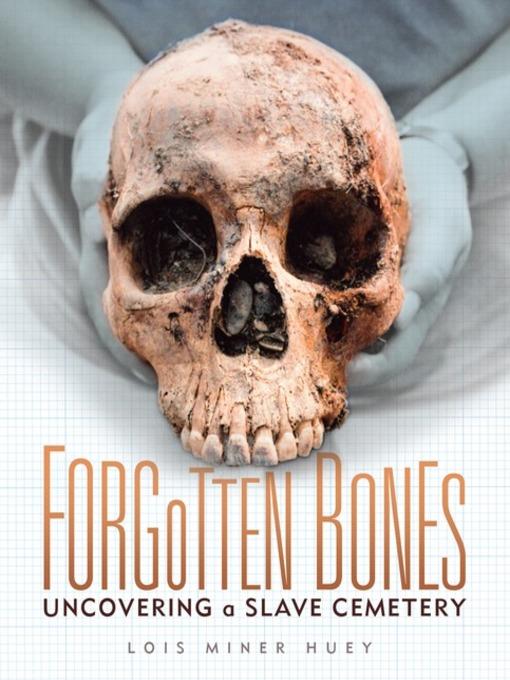
Forgotten Bones
Uncovering a Slave Cemetery
فرمت کتاب
ebook
تاریخ انتشار
2015
Lexile Score
1030
Reading Level
5-8
ATOS
6.9
Interest Level
4-8(MG)
نویسنده
Lois Miner Hueyشابک
9781467763004
کتاب های مرتبط
- اطلاعات
- نقد و بررسی
- دیدگاه کاربران
نقد و بررسی

August 1, 2015
Gr 5-7-Readers' interest in this volume will be piqued from the stunning cover image of a 200-year-old skull. The book explains how archaeologists in Albany, NY, excavated a slave cemetery and analyzed artifacts using DNA evidence, soil testing, and historical puzzle-solving. Though the science and technology are sophisticated, the descriptions are written in plain, accessible language. The organization is easy to follow. Photographs, illustrations, and diagrams on every page bring the subject to life by clarifying visually how artifacts are examined. The author adopts an objective tone, though she doesn't avoid discussing the realities of slavery, emphasizing in the last two chapters evidence of the physical abuse, malnutrition, and disease that resulted from the brutal conditions. Readers may be surprised to discover that there was slavery in the North in the 18th century, and they will appreciate seeing how much archaeologists can learn from seemingly small details. VERDICT A solid choice for libraries that serve middle school students, this title will appeal to some would-be archaeologists and is a great addition to classrooms as well.-Amy Thurow, New Glarus School District, WI
Copyright 2015 School Library Journal, LLC Used with permission.

July 15, 2015
The discovery of a skull by construction workers begins an archaeological mystery. In Albany, New York, in 2005, workers putting in a new sewer line dug up a skull. After police confirmed the skull was not connected to any recent crimes, a team of archaeologists took a closer look. They determined the skull was from an African-American who had died more than 100 years earlier. Scientists excavated more bones and realized that they had located a long-forgotten slave cemetery. This site became just the third slave cemetery ever to be excavated in the North. Huey, an archaeologist for the state of New York, offers an insightful, intimate look at the processes used to excavate the site, how the remains are examined in the laboratory, DNA studies, facial reconstruction, and the historical research required to try to find specific information about the slaves buried at the site. Huey shows how laboratory tests revealed important information about the slaves buried in that cemetery and others, such as their ages and health at the time of death, their diets, and even the region of Africa they originated from. A fascinating, informative insider's look at how science is used to reconstruct the past. (diagrams, photos, glossary, source notes, further reading, index) (Nonfiction. 8-12)
COPYRIGHT(2015) Kirkus Reviews, ALL RIGHTS RESERVED.

September 15, 2015
Grades 5-8 In this concise volume, Huey offers a fascinating glimpse into how archaeologists piece together the past. During a construction project in New York, workers unearthed a human skull, which led to the discovery of an eighteenth-century burial site, eventually determined to be a slave cemetery. Huey follows the scientists' process as they investigate the identities of the remains and the circumstances that led individuals to be buried in unmarked graves. A professional archaeologist herself, Huey explains many of the methods used by the team, such as excavation, laboratory analysis, and facial reconstruction. From the initial discovery of the bones to the wider clues found in artifacts, DNA, and primary sources, the scientists determine the religious beliefs, living conditions, and causes of death for the men and women in the cemetery. Together with chronicles of two other noted northern slave cemeteries and full-color photos of the excavation in process, this account provides a vivid description of both the eighteenth-century slave experience and the field of archaeology.(Reprinted with permission of Booklist, copyright 2015, American Library Association.)

























دیدگاه کاربران